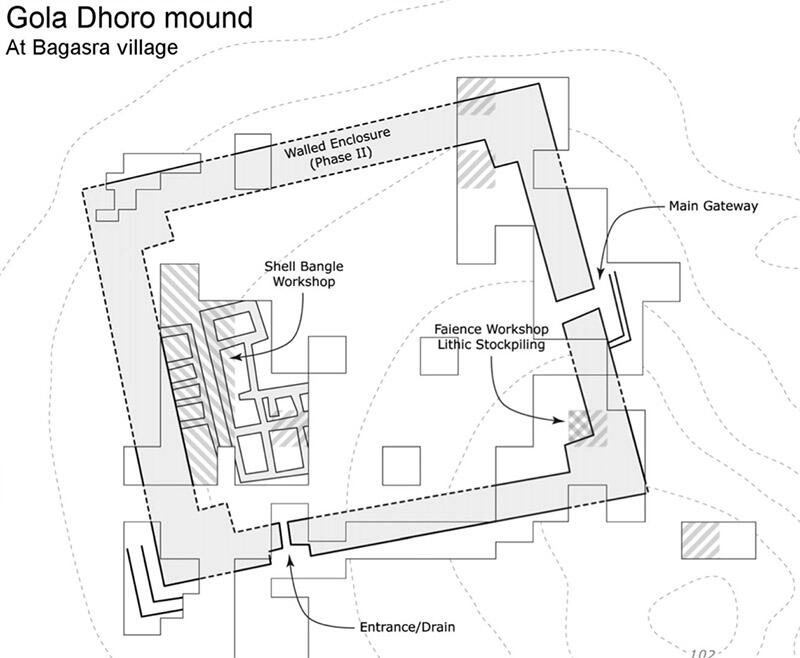"A detailed analysis of the animal bone assemblage at Gola Dhoro here throws light on the expansion of the Indus civilisation into Gujarat. A square fort, imposed on a settlement of livestock herders in the later third millennium BC, was shown to have contained people who introduced a broader diet of meat and seafood, and new ways of preparing it. These social and dietary changes were coincident with a surge in craft and trade." (Abstract)
The author shows how at this small but highly specialized and suddenly abandoned shell manufacturing center (see our Slideshow Gola Dhoro), one can trace the habits of its inhabitants by carefully examining their discarded bones. During the first phase, "it is clear that beef was by far the most common meat consumed," (p. 534). During Phase II, after the construction of the massive square wall shown above, distinct meat eating habits can be discerned between people inside and outside the walls. Those inside ate better cuts of mutton, for example, and indeed, ate more mutton, pork and fish than their neighbours living outside, suggesting " that the residents of these two areas were distinguished by their food preferences, economic organisation, or both" (p. 538). Indeed, "the bones of pigs, while common inside the walled enclosure, were exceptionally rare prior to its construction and continued to be rare in contexts outside of the walls, suggesting that the residents of this structure were distinguished by their pork consumption" (p. 538). In short, the inhabitants inside and outside the enclosure ate meat.
Chase concludes: "These findings can be taken to support the idea that the construction of the walled enclosure and the inauguration of crafting and trading activities at the site were the products of socially distinct craftspeople and traders who had recently migrated to the region (Joshi 1972; Bisht 1989; Possehl & Raval 1989; Dhavalikar 1994; Chakrabarti 1995). If this were the case, however, their activities did not lead to a major change in local productive economies, and they may have been closely involved with pastoral production as might be expected of settler-colonists (c.f. Steffen 1980). Alternatively, the construction of the walled enclosure may have been the product of members of local communities who, as they profited from increased participation in inter-regional trade and exchange networks, came to be socially distinguished from their neighbours by their domestic economies and practices" (p. 540). More work needs to be done to determine exactly what happened, but the article shows how the analysis of discarded animal bones at a site can elicit questions and offer important insights about the people who inhabited them.
Image: Map of Gola Dhoro (courtesy of the Department of Archaeology and Ancient History, Maharaja Sayajirao University at Baroda).

